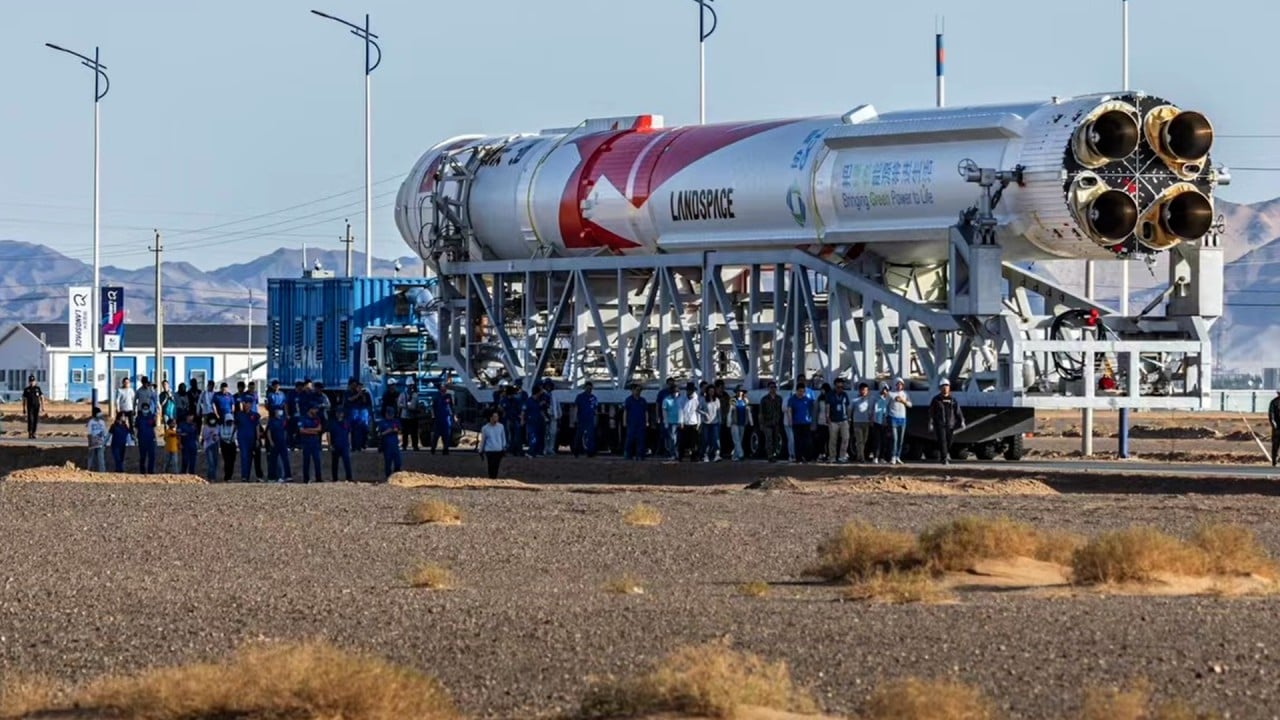
In world first, China’s LandSpace methane rocket sends satellites into orbit
- The private firm’s Zhuque 2 Y-3 lifts off from northern China with three satellites on board, ‘pioneering a new stage’ for the technology
- Company expects to be able to more than double its payload capacity with some improvements
The Zhuque 2 Y-3, developed by Beijing-based private aerospace company LandSpace, blasted off from the Jiuquan Satellite Launch Centre in northwest China at 7.39am, according to state news agency Xinhua.
The rocket sent three satellites – Honghu, Honghu 2, and TY-33 – into planned orbit, the report said.
LandSpace said the launch “pioneered a new stage for the commercialisation of launching liquid-powered rockets in China” and proved the technology’s reliability and stability.
“We will continuously create highly reliable, cost-effective, and high-capacity commercial launch rocket products,” the company said.
“The key to achieving true industrialisation and commercialisation of liquid rockets is to realise low-cost, large-scale manufacturing and delivery of rockets and ensure continuous and stable launch success.”

01:56
China’s Shenzhou 16 space crew returns to Earth after 5 months in orbit
The company said the Honghu and TY-33 satellites, developed by Chinese start-up Spacety, and the Honghu 2, built by start-up Hongqing Technology, were put into a 460km (285-mile) sun-synchronous orbit.
It did not specify the weight or size of each satellite.
But it did say the rocket had the capacity equivalent to being able to take up to 1.5 tonnes into a 500km sun-synchronous orbit.
With improvements it is expected to be able to expand its payload capacity to 4 tonnes at that orbit, meeting the needs of spacecraft and near-Earth orbit satellites, according to the company.
The rocket was 49.5 metres (162 feet) in length, had a diameter of 3.35m, and had a lift-off mass of 220 tonnes, excluding the payloads, it said.
Chinese news outlet Caixin reported that LandSpace planned three launches next and to double the number annually to reach 12 launches in 2026.

01:27
China beats SpaceX with world’s first methane-powered rocket launch
LandSpace first tried to launch a methane-liquid oxygen rocket in December 2022 but the attempt was unsuccessful.
It tried again in July and succeeded, becoming the first in the world to do so and opening a new era for methane in commercial launches.
Methane burns more cleanly than carbon-based fuels, prolonging the engine’s life and making it more applicable for reusable rockets.
According to US space agency Nasa, methane is also more stable and denser than liquid hydrogen, the most common rocket fuel, allowing it to be stored at “more manageable temperatures” and enabling the use of smaller tanks.
Two other US-made liquid oxygen methane rockets – SpaceX’s Starship and Terran 1 from the US aerospace firm Relativity Space – failed at their attempts to reach orbit earlier this year.

